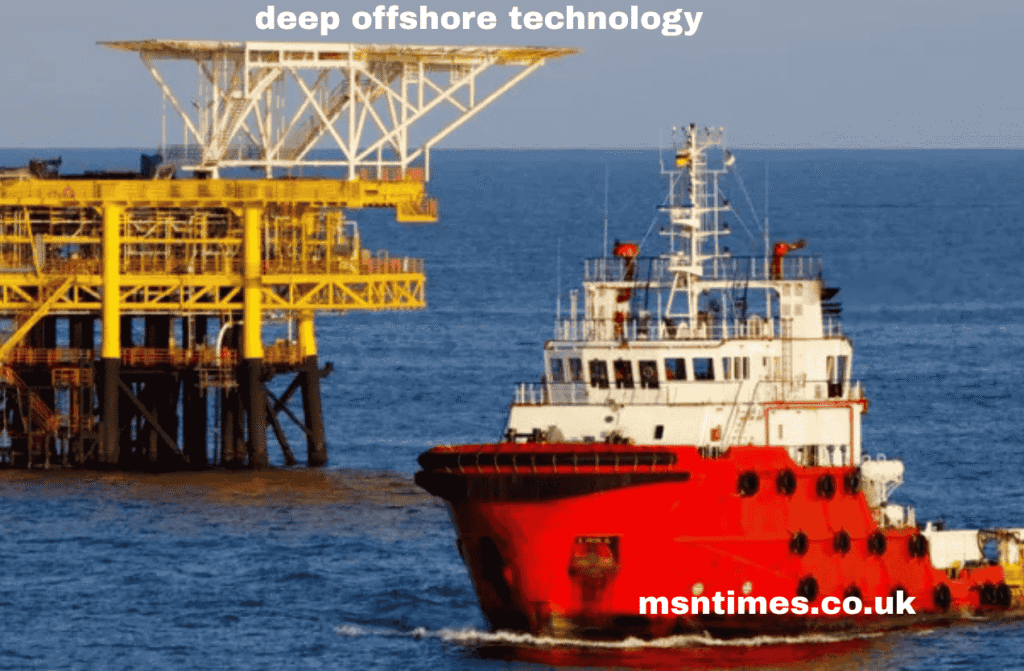Introduction
Deep offshore technology?? is a cornerstone of modern energy and maritime engineering. As the world searches for sustainable energy sources and more efficient ways to extract underwater resources, the importance of deep offshore technology?? continues to grow. From oil and gas exploration to renewable energy installations and undersea infrastructure, this field represents a blend of complex engineering, innovative problem-solving, and environmental considerations. This article explores the critical aspects, recent innovations, challenges, and the future potential of deep offshore technology??.
Understanding Deep Offshore Technology??

Deep offshore technology?? refers to the methods, tools, and systems used to explore, develop, and manage resources located in deep ocean environments, typically at depths greater than 500 meters. These environments are marked by high pressure, low temperatures, and limited human accessibility. Key components include subsea drilling rigs, remotely operated vehicles (ROVs), dynamic positioning systems, and undersea pipelines.
The development of deep offshore technology?? began in the mid-20th century but has rapidly accelerated in the last few decades. This growth has been driven by the depletion of onshore and shallow water resources, pushing industries to look further and deeper beneath the ocean surface.
Key Components and Applications

The applications of deep offshore technology?? are diverse, spanning across several sectors:
- Oil and Gas Exploration and Production:
- The most prominent use of deep offshore technology?? lies in the exploration and extraction of hydrocarbons. Floating production systems, such as FPSOs (Floating Production Storage and Offloading units), are common installations used in ultra-deep waters.
- Subsea Infrastructure:
- This includes pipelines, wellheads, manifolds, and umbilicals that connect subsea systems to surface platforms or shore-based facilities. The design and installation of these components must withstand extreme oceanic conditions.
- Renewable Energy:
- With the rise of sustainable energy, deep offshore technology?? is being adapted for offshore wind farms and marine energy solutions like wave and tidal power installations. Floating wind turbines represent a significant innovation in this field.
- Telecommunication and Data Cables:
- Deep offshore environments are also host to undersea fiber optic cables that form the backbone of global communication systems.
Technological Innovations

Deep offshore technology?? has seen significant technological advancements to overcome the inherent challenges of deep-sea operations:
- Robotics and ROVs:
- Remotely Operated Vehicles are essential for inspection, maintenance, and repair tasks in deep waters. Equipped with cameras, sensors, and manipulator arms, they serve as the eyes and hands of engineers operating from control centers on the surface.
- Autonomous Underwater Vehicles (AUVs)
- : Unlike ROVs, AUVs operate without tethers and are used for survey missions, including seabed mapping and environmental monitoring.
- Advanced Materials:
- The use of corrosion-resistant alloys, composites, and high-strength polymers ensures durability and performance in harsh environments.
- Digital Twin Technology:
- Digital twins are virtual replicas of physical systems. In deep offshore operations, they enable real-time monitoring, predictive maintenance, and scenario simulation, improving operational efficiency.
- Subsea Processing Units:
- Instead of transporting raw resources to the surface, subsea processing allows partial treatment of oil and gas directly on the seabed, reducing operational costs and risks.
Environmental and Safety Challenges
Operating in deep offshore environments presents significant safety and environmental concerns:
- Ecological Impact: The construction and operation of deep offshore installations can disrupt marine ecosystems. Measures such as environmental impact assessments and habitat restoration are crucial to mitigate damage.
- Accident Risks: High-pressure environments and complex machinery raise the risk of accidents. Blowouts, pipeline leaks, and structural failures can lead to catastrophic consequences.
- Emergency Response: In the event of a failure, the remote location and depth of offshore sites complicate rescue and recovery operations.
- Regulatory Compliance: Operators must navigate a complex web of international and national regulations governing deep offshore operations, including environmental laws, safety standards, and maritime jurisdiction.
Economic Considerations
The economics of deep offshore technology?? are complex. High capital expenditures (CAPEX) and operational expenditures (OPEX) require robust financial planning and risk management. Technological innovations help reduce costs, but market volatility, particularly in the oil and gas sector, can affect the feasibility of projects. Collaborations, joint ventures, and government incentives often play a role in funding large-scale initiatives.
Global Hotspots and Projects
Several regions around the world have become focal points for deep offshore technology?? development:
- Brazil: The pre-salt basins off the Brazilian coast represent some of the most challenging and resource-rich deepwater environments.
- Gulf of Mexico: Known for its deepwater oil fields, this region has pioneered many advancements in offshore drilling.
- West Africa: Countries like Nigeria and Angola have invested heavily in offshore exploration.
- North Sea: Despite being a mature region, innovations in technology continue to support deep offshore operations in this area.
The Future of Deep Offshore Technology??
As demand for energy grows and environmental concerns intensify, the future of deep offshore technology?? will likely revolve around sustainable and intelligent systems:
- Integration of AI and Machine Learning: These technologies can optimize operations, predict equipment failures, and reduce human intervention in hazardous environments.
- Sustainable Energy Integration: Expect more hybrid platforms that combine fossil fuel extraction with renewable energy generation.
- Carbon Capture and Storage (CCS): Deep offshore reservoirs offer potential sites for storing captured carbon dioxide, helping mitigate climate change impacts.
- Modular and Scalable Systems: Innovations will focus on developing systems that are easier to install, maintain, and expand, making deep offshore projects more adaptable and cost-effective.
Conclusion
Deep offshore technology?? stands at the intersection of engineering brilliance, environmental stewardship, and economic strategy. Its role in meeting the world’s energy needs while advancing sustainable practices cannot be overstated. As technology continues to evolve, the potential for safer, more efficient, and environmentally friendly deep offshore operations will only grow. Embracing these advancements while managing associated risks will define the next chapter in the story of deep offshore technology??.
Also Read : Download Age of Empires Mobile on Laptop Usitility: A Quick Guide
